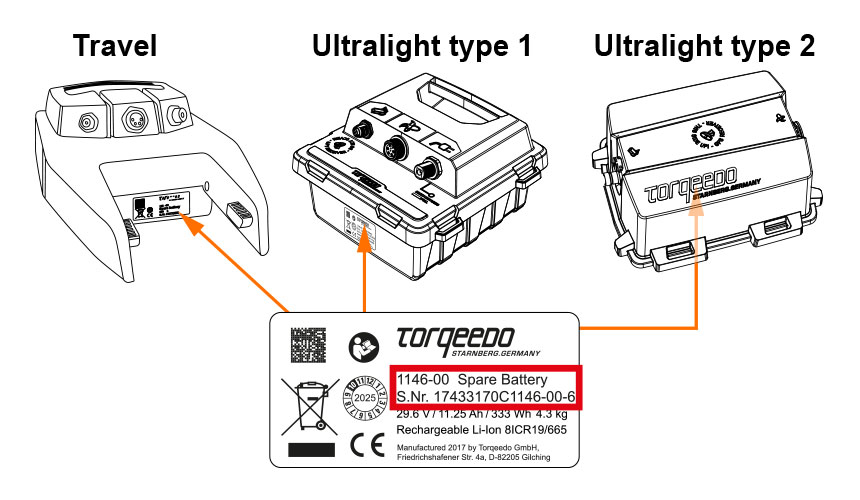Important safety advisory for batteries in Torqeedo Travel and Ultralight outboard motors
Dear Customers, your safety is our top priority. We are therefore informing you about a possible safety risk in connection with the batteries of our outboard motors "Travel" and "Ultralight"
What is the cause?
There is a possible leak in the battery housing, therefore it cannot be ruled out that water may penetrate into the battery housing. There is a corresponding risk in particular if a leaky battery becomes completely or partially submerged under water, so that more water can penetrate into the battery housing. If water penetrates into the housing, it may cause a chemical reaction inside the battery case under unfavourable conditions, resulting in fire and/or bursting of the battery housing. There is a risk of injury!
We will perform an inspection for the following models and serial numbers and - if necessary - repair of the batteries:
| Model | Serial number (S. no.) from… – to… |
|---|---|
| Travel | 1001… – 1752… |
| Ultralight | 1117… – 1826… |
 Fig.: Position of type plate with article & serial number
Fig.: Position of type plate with article & serial number Fig.: Position of type plate with article & serial number
Fig.: Position of type plate with article & serial number Fig.: Position of type plate with article & serial number
Fig.: Position of type plate with article & serial number